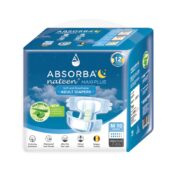
The maritime industry plays a vital role in global trade and transportation, but it also faces unique safety challenges due to its inherently risky environment. Ensuring the safety of crew members, vessels, and the environment is paramount. Maritime Health, Safety, and Environmental (HSE) software is revolutionizing the way the industry manages safety and compliance. In this blog, we’ll explore the significance of Maritime HSE software and its impact on the maritime industry.
Understanding Maritime HSE Software
1. Streamlining Compliance:
Maritime HSE software assists organizations in adhering to complex maritime regulations, including the International Maritime Organization (IMO) regulations and national laws. It automates compliance checks, reducing the risk of regulatory fines and penalties.
2. Enhancing Safety Management:
Safety is the top priority in the maritime industry. HSE software allows for the systematic identification and management of safety risks. It tracks incidents, conducts safety audits, and monitors crew training and certifications.
3. Environmental Protection:
Maritime HSE software includes features to monitor and reduce the environmental impact of vessels. This includes tracking emissions, managing waste disposal, and ensuring compliance with international environmental standards.
Benefits of Maritime HSE Software
1. Real-time Data:
HSE software provides real-time data and analytics, allowing organizations to make informed decisions promptly. It enables quicker response to safety incidents or potential issues.
2. Improved Communication:
Enhanced communication among crew members, shore-based staff, and regulatory authorities is crucial for safety. HSE software facilitates seamless communication and reporting.
3. Reduced Administrative Burden:
Automation of compliance checks, incident reporting, and safety audits reduces administrative tasks, freeing up resources for more critical safety functions.
4. Cost Savings:
By proactively identifying and addressing safety risks, organizations can avoid costly accidents, downtime, and legal expenses.
Case Studies
1. Incident Management:
Maritime HSE software helped a shipping company efficiently manage and investigate incidents. It allowed for root cause analysis, leading to improved safety procedures and a reduction in incident rates.
2. Emission Reduction:
A cruise line adopted HSE software to track emissions and optimize fuel consumption. This led to a significant reduction in greenhouse gas emissions and compliance with international emission standards.
Future Trends
1. Integration with IoT:
Maritime HSE software is expected to integrate with Internet of Things (IoT) devices to provide real-time monitoring of vessel conditions, enhancing safety and efficiency.
2. Artificial Intelligence:
AI-driven predictive analytics will play a crucial role in identifying potential safety risks and suggesting proactive measures.
Maritime HSE software is a game-changer in the maritime industry, promoting safety, compliance, and environmental responsibility. By harnessing the power of technology, organizations can navigate the complex waters of maritime safety more effectively, ensuring the well-being of crew members, safeguarding vessels, and protecting the environment for future generations. As the industry continues to evolve, embracing HSE software is not just an option; it’s a necessity for safe and sustainable maritime operations.
The maritime industry plays a vital role in global trade and transportation, but it also faces unique safety challenges due to its inherently risky environment. Ensuring the safety of crew members, vessels, and the environment is paramount. Maritime Health, Safety, and Environmental (HSE) software is revolutionizing the way the industry manages safety and compliance. In this blog, we’ll explore the significance of Maritime HSE software and its impact on the maritime industry.
Understanding Maritime HSE Software
1. Streamlining Compliance:
Maritime HSE software assists organizations in adhering to complex maritime regulations, including the International Maritime Organization (IMO) regulations and national laws. It automates compliance checks, reducing the risk of regulatory fines and penalties.
2. Enhancing Safety Management:
Safety is the top priority in the maritime industry. HSE software allows for the systematic identification and management of safety risks. It tracks incidents, conducts safety audits, and monitors crew training and certifications.
3. Environmental Protection:
Maritime HSE software includes features to monitor and reduce the environmental impact of vessels. This includes tracking emissions, managing waste disposal, and ensuring compliance with international environmental standards.
Benefits of Maritime HSE Software
1. Real-time Data:
HSE software provides real-time data and analytics, allowing organizations to make informed decisions promptly. It enables quicker response to safety incidents or potential issues.
2. Improved Communication:
Enhanced communication among crew members, shore-based staff, and regulatory authorities is crucial for safety. HSE software facilitates seamless communication and reporting.
3. Reduced Administrative Burden:
Automation of compliance checks, incident reporting, and safety audits reduces administrative tasks, freeing up resources for more critical safety functions.
4. Cost Savings:
By proactively identifying and addressing safety risks, organizations can avoid costly accidents, downtime, and legal expenses.
Case Studies
1. Incident Management:
Maritime HSE software helped a shipping company efficiently manage and investigate incidents. It allowed for root cause analysis, leading to improved safety procedures and a reduction in incident rates.
2. Emission Reduction:
A cruise line adopted HSE software to track emissions and optimize fuel consumption. This led to a significant reduction in greenhouse gas emissions and compliance with international emission standards.
Future Trends
1. Integration with IoT:
Maritime HSE software is expected to integrate with Internet of Things (IoT) devices to provide real-time monitoring of vessel conditions, enhancing safety and efficiency.
2. Artificial Intelligence:
AI-driven predictive analytics will play a crucial role in identifying potential safety risks and suggesting proactive measures.
Maritime HSE software is a game-changer in the maritime industry, promoting safety, compliance, and environmental responsibility. By harnessing the power of technology, organizations can navigate the complex waters of maritime safety more effectively, ensuring the well-being of crew members, safeguarding vessels, and protecting the environment for future generations. As the industry continues to evolve, embracing HSE software is not just an option; it’s a necessity for safe and sustainable maritime operations.











